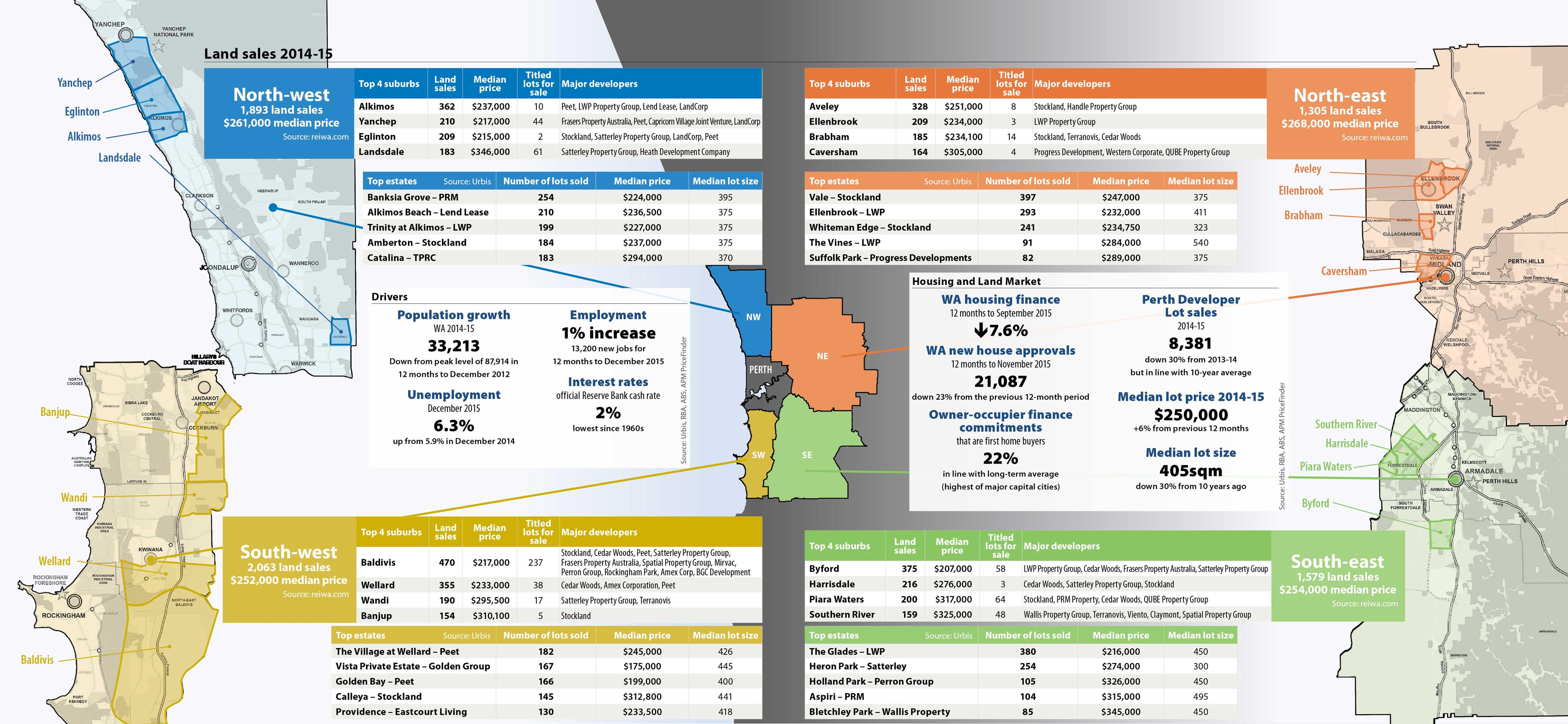Slowing population growth and a stalling economy are producing significant headwinds in the residential land sector.
It wasn’t all that long ago that Perth was facing a residential land shortage, with developers scrambling to keep up with demand from record-breaking population growth and a booming economy.
In 2013, the lack of land was the biggest challenge facing developers in the state, with all-time highs for lot sales resulting in a nine to 12 month wait between contract and settlement for most buyers.
Heading into 2016, however, things are markedly different.
With the resources sector moving from construction to production, the state’s economy has cooled significantly.
Unemployment is up, wages have stalled and population growth has reduced by more than 50,000 people per year from the peak in 2012, when 87,914 people shifted to Western Australia.
The flow-on effects of those economic conditions are now being felt in Perth’s land development sector.
A new report on greenfields land development in WA by analytics and consulting firm Urbis, set to be released later this month, shows 8,298 lots were sold in 2014-15, down 30 per cent on the previous corresponding 12 months.
While that’s still in line with 10-year averages, the slowing sales have resulted in significant changes in the landscape for the state’s top developers.
Housing approvals figures from the Australian Bureau of Statistics show developers are facing a challenging time, with 23 per cent fewer dwellings getting the tick in 2014-15, compared with the previous year.

